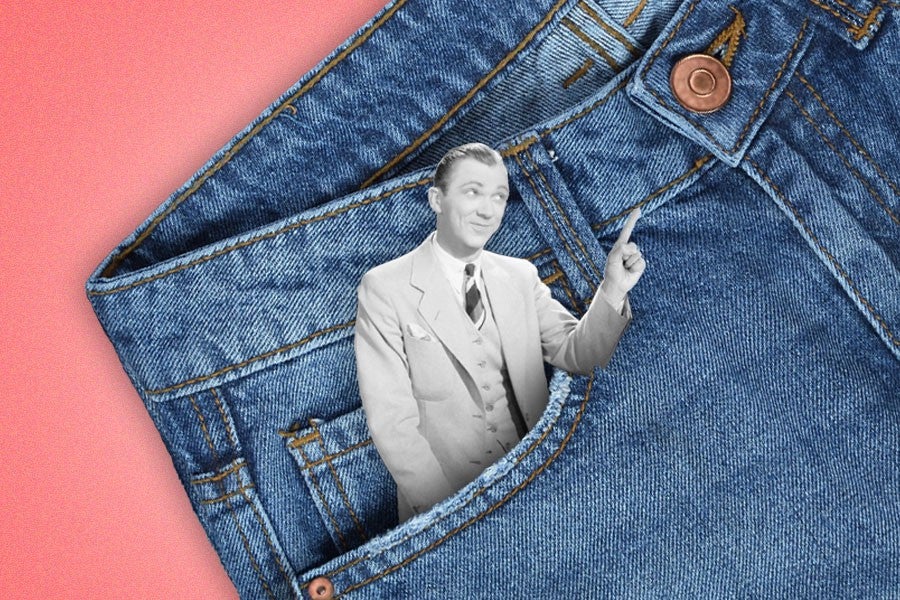These days, just about anything that’s slightly used and more than a few years old will be slapped with a wildly optimistic price tag and marked as “vintage.” Be it that screenprinted Rush T-shirt, a table with a few missing legs or even a used spatula, labeling an item as vintage is the best way to sell some old shit for more than it’s worth.
Admittedly, some old shit is actually vintage. I know this because, being something of a scummy hipster, I frequent vintage furniture and clothing stores, attend flea markets, and yes, eat avocado toast. By virtue of these tendencies, well, I hate myself. But I’ve also overheard far smarter people picking out the things that are actually worth buying.
With that in mind, I reached out to some experts to find out the difference between something that’s vintage and something that’s plain old second hand.

Mike, Marina Loan and Jewelry: It depends on the popularity. If it’s still popular, like a Louis Vuitton duffle bag, even if that’s only a few years old it’s considered vintage. Same goes with jewelry: A Tiffany’s necklace that’s not even 10 years old is considered vintage. The ultimate determining factor is who makes it.
Anna, Rebound Consignment Furniture: Typically, anything that’s 25 years old or more is considered vintage, at least from what I’ve read. But it’s mostly the hardware that determines what’s vintage — it’s in the different kinds of nails that are used. Technology has improved over time, so any electrical pieces or plugs will show whether something is vintage or not. Another determining factor is furniture that’s nailed together or glued together, versus furniture that has notches that fit together perfectly so that the pieces don’t pull apart. Vintage furniture is usually built with greater quality products.
Certain brands like Century Furniture have been around for a long time, so that’s another way to know that something has the potential to be vintage — if the brand existed in the mid-century. The most obvious differentiation is solid wood that was made to last, versus particle board or board-pressed material. What we label as vintage items are almost always made of solid wood because particle board didn’t exist back then.
Sarah, The Way We Wore: We’ve been in the vintage business for decades, so we may have a different outlook on the subject than some of the more recent purveyors. We consider items over 20 years old to be vintage — so as it stands right now, 1990s can be called vintage.
In the common contemporary vernacular, “old” can be used to describe a dress you bought last week or last year. It’s become kind of useless for our purposes. So vintage is for items 20 years or older, antique for items 100 years or older.
Meredith, Loveseat Vintage Furniture: Personally, I think the difference is subjective and depends on a person’s level of interest in the product. If it’s labeled as vintage then you think the oldness part is cool. But there are qualitative ways to tell the difference as well: The screws will be new, glue will be new. In vintage pieces, the nails are hand forged, whereas in newer pieces the nails are smooth and perfectly symmetrical because they’re manufactured. Certain techniques for making drawers — like dovetailing, that are labor intensive and require a skilled person — no longer exist, so that’s another sign.
Materials, to a certain extent, can indicate whether something is vintage. Certain species of wood have gone extinct and can’t be found anymore. Older wood develops wear in a very particular way, where the grain lines will be more pronounced since they’re harder and better withstand wear and tear. People have tried to reproduce that “look,” but you can usually tell the difference.
Kari, Regeneration Vintage Clothing: Stitching is one of the ways to determine whether something is vintage. For example, to determine when a pair of Levi’s jeans were made, one way they use to determine vintage is single stitching — newer Levi’s have double stitching. But it’s really subjective amongst vintage dealers and largely based on a dealer’s vision. For me, it might change from month-to-month, based on what people are buying.

